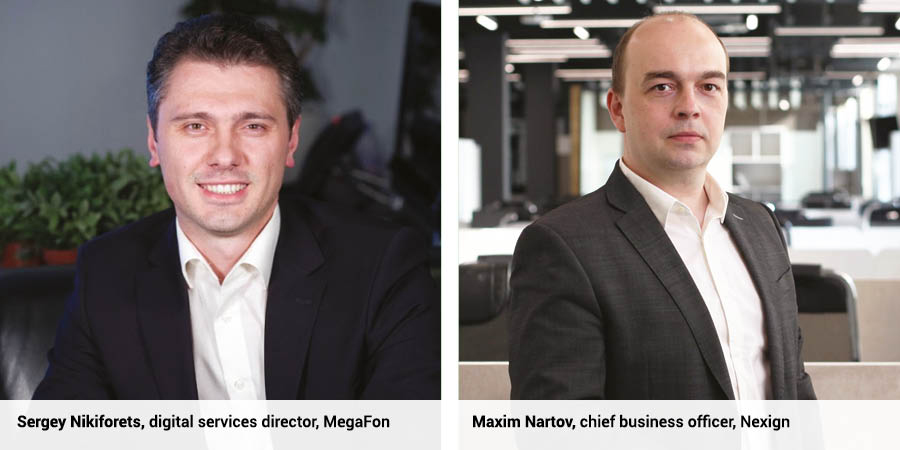In the early days of mobile telecommunications, telecom operators focused on selling different rate plans to their customers. They never thought about naturally expanding beyond their original business niche, and rightfully so: digital ecosystems were non-existent, the internet was in its web 1.0 days, and even DVD was yet to become mainstream. Fast forward to 2021, things have changed on every level: telecom operators provide the foundation to the flourishing digital environment full of independent or intertwined ecosystems, and the urge to become a part of this new world has become natural to telco operators.
A very interesting use case in this area is the microservices factory, the fruit of collaboration between Nexign, a major BSS provider, and MegaFon, Russia’s leading digital service provider. The factory has enabled MegaFon to create its own flexible digital ecosystem capable of rapidly reacting to all market changes and attracting new partners at an impressive pace. Telecom Review talked with Sergey Nikiforets, MegaFon’s digital services director, and Maxim Nartov, Nexign’s chief business officer, and asked them a few questions about the solution, its creation, and the results of its deployment.
What is the microservices factory? What is it based on?
Maxim Nartov, Nexign: In a word, it’s a software/services complex that enables one to develop new products on the go while supporting the operator’s partnership ecosystem. The solution is based on Nexign microservices framework that leverages the latest technologies, such as DevOps, CI/CD automation and cloud deployment facilitating partner integration and collaboration.
MegaFon’s microservices factory is placed in the middle layer between the unified billing foundation and the front-end platform on the operator’s side. Microservices are like small building blocks that can be swiftly combined in such a way as to produce new services.
What prompted MegaFon to create the microservices factory? How does it help the operator in becoming a digital services provider?
Sergey Nikiforets, MegaFon: These days, it is simply not enough for a telecom operator to retain the old models and old approaches. The world keeps moving forward, and companies need to address these changes insofar as they want to remain successful and profitable. The microservices factory was the solution conceived for the purpose of further transforming MegaFon from a regular telecom operator into a full-fledged digital services provider. Thanks to it, we are able to roll out new services and connect new partners to our ecosystem easily and in no time. Those services may vary from ordering a cab to delivering groceries, all in the same ecosystem. As a result, we cannot call MegaFon a classic telco operator any longer. It’s more of a digital services platform and a telecommunications provider all rolled into one.
How does it support MegaFon’s partners? What are the benefits it brings for them?
Sergey Nikiforets, MegaFon: The factory employs the microservices architecture as well as makes use of so-called enablers that simplify the connection of new partners. For instance, there is a federated catalogue that configures different ecosystem-based products. There is also an execution system that orchestrates seamless order delivery with all involved parties; a system called Customer View 360 that secures partner access to customer info without compromising user privacy; and a solution called Federated SSO that assigns internal access privileges for our internal functions and services. The partners connect through our integration layer and then enjoy lots of new customers that access their services through MegaFon’s unified interface.
How did you develop this complicated system, considering there were two companies with different expertise involved in the process? How did you organize the work of development teams?
Maxim Nartov, Nexign: By the time the project commenced, we knew each other well enough from our previous cooperation on unified billing. It became clear to us that the classical customer/contractor model was too cumbersome and outdated for a project that required extra agility and efficacy. So we abandoned the traditional approach and merged our teams. We found that this approach brought about a synergistic effect, meaning that the efficiency of merged teams has far exceeded our reasonable expectations. Those teams continue improving and further developing the microservices factory as we speak.
Speaking of efficiency, were there any significant improvements in business processes after the deployment of the factory? Did it boost your business as expected?
Sergey Nikiforets, MegaFon: The results were frankly astounding. Time to market for new products got slashed from 3 months to 2 weeks. In just a year, over 100 services have been launched. Moreover, recently we were able to launch MegaFon Plus, a multi-subscription service to meet the high demand on the domestic Russian market, and offered subscription to AppleMusic to our customers, all thanks to the microservices factory. Other notable partnerships include hotel booking services, grocery deliveries, and ride-hailing solutions. It all forms the open ecosystem of digital services offered by MegaFon.
You mentioned that the microservices factory is still being developed and improved. Are plans to scale up the project on the table?
Maxim Nartov, Nexign: The Nexign microservices framework was conceived as a scalable solution. It has been tested at the base of MegaFon microservices factory and it has proven to be a success. We are willing to offer it to the market. The Nexign microservices framework can benefit any telecom operator that wishes to expand beyond its traditional business niche.










